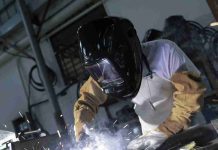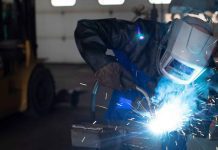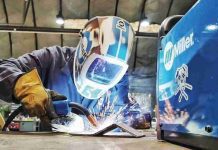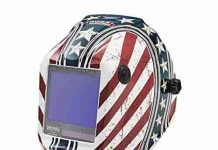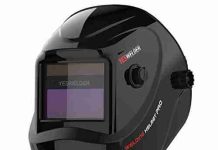Welding helmets, although essential for protecting our eyes and face during welding operations, do come with a set of disadvantages. From restricted visibility to uncomfortable fit, these helmets can sometimes pose challenges for welders. In this article, we will explore the drawbacks of welding helmets, providing valuable insights for those in the welding industry. So, if you’re curious to know the flip side of these vital safety gears, keep on reading!
Limited visibility
Restricted field of vision
One major disadvantage of welding helmets is their limited field of vision. When wearing a welding helmet, our line of sight is often restricted to a narrow window or lens. This can make it challenging to see peripheral objects or obstacles, posing potential safety risks. Welders may have difficulty observing their surroundings, especially in busy or crowded work environments.
Difficulty seeing in low-light environments
Another drawback of welding helmets is the difficulty in seeing in low-light environments. Welding often takes place in areas with reduced lighting to enhance visibility of the bright welding arc. However, this can make it challenging for welders to see clearly outside the illuminated welding area. This limitation may affect productivity and can increase the risk of accidents or errors.
Physical discomfort
Heavy and bulky
Welding helmets are known for their heavy and bulky nature. The weight of the helmet can exert strain on our neck and shoulders, especially when working for extended periods. This discomfort can impact our performance and contribute to fatigue, potential distractions, and decreased productivity. The bulkiness of the helmet may also restrict our movement and hinder our ability to work in tight or confined spaces.
Heat buildup
While performing welding tasks, the high heat generated can result in heat buildup inside the helmet. The lack of proper airflow or ventilation can make the helmet feel hot and stuffy, leading to sweating and discomfort. Prolonged exposure to such heat may cause excessive fatigue and can affect our ability to concentrate. Moreover, the heat buildup can contribute to fogging of the lens, further impairing visibility.
Restricted airflow
Another physical discomfort associated with welding helmets is the restricted airflow. The helmet’s design, meant to provide protection, can sometimes limit the flow of fresh air to our face. In situations where ventilation is inadequate, this can cause discomfort due to lack of oxygen and may increase the risk of heat-related issues. The restricted airflow can also lead to the accumulation of fumes or pollutants, potentially affecting our respiratory health.
Lack of versatility
Limited compatibility with other protective equipment
Welders often need to wear additional protective gear, such as goggles or glasses, to ensure comprehensive safety. However, one of the disadvantages of welding helmets is their limited compatibility with other protective equipment. It can be challenging to wear glasses or goggles underneath the helmet, reducing their effectiveness in safeguarding our eyes. This limitation may force welders to choose between optimal eye protection and wearing their prescription glasses or specialized goggles.
Difficulty wearing glasses or goggles underneath
For welders who rely on corrective eyewear or specialized goggles, wearing a welding helmet can be a challenge. The design of the helmet may not accommodate the presence of glasses or goggles in a comfortable or secure manner. It may cause pressure on the nose, discomfort around the ears, or an improper fit of the glasses. This can lead to unnecessary distractions and hamper our ability to work efficiently.
Reduced communication
Difficulty hearing or speaking clearly
Communication is crucial in any work environment, and welding helmets can impede clear communication. The helmet’s design may restrict our ability to hear or muffle sounds from the surrounding environment. This can lead to missed instructions, potential safety risks, and decreased collaboration with colleagues. Additionally, speaking clearly while wearing a welding helmet can be challenging, affecting effective communication with others on the job.
Limited interaction with others
The nature of welding helmets, with their enclosed design, can limit our interaction with others in the workplace. The helmet may physically separate us from our colleagues, making it challenging to engage in face-to-face communication or establish eye contact. This limited interaction can lead to a sense of isolation and hinder teamwork or the exchange of ideas. It can also make it difficult for supervisors or colleagues to monitor our progress or provide timely guidance.
Safety concerns
Risk of improper fit or adjustment
One of the safety concerns associated with welding helmets is the risk of improper fit or adjustment. If the helmet does not fit properly, it may not provide adequate protection, leaving our face or eyes vulnerable to potential hazards. Moreover, a poorly fitted helmet can cause discomfort and distract us from the task at hand, compromising our safety and overall welding performance. Proper fit and adjustment are critical to ensure optimal protection and comfort.
Potential for neck strain or fatigue
Due to their weight and design, welding helmets can contribute to neck strain and fatigue. The prolonged use of a heavy helmet can strain the muscles in our neck and shoulders, leading to discomfort or pain. This physical strain can affect our focus and concentration, increasing the chances of errors or accidents. Frequent breaks or adjustments may be necessary to alleviate fatigue and maintain a safe working posture.
Expensive investment
Cost of quality welding helmets
Investing in a quality welding helmet can be a significant expense. High-quality helmets often come with advanced features for improved safety, comfort, and durability. However, these added features often come at a higher price tag. While it is essential to prioritize safety, the cost factor can be a disadvantage for welders starting out or working on a tight budget. The initial investment may require careful consideration, especially for those who are new to the welding profession.
Maintenance and replacement expenses
Apart from the initial cost, welding helmets also incur ongoing maintenance and replacement expenses. Over time, helmet components may wear out, requiring replacement or repair. Lens replacements, headgear adjustments, or replacing worn-out straps are common maintenance tasks. While necessary for optimal performance and safety, these expenses can add up. Keeping helmets well-maintained and replacing parts when needed is crucial to ensure proper protection, adding to the overall cost of owning and using a welding helmet.
Skill requirement
Need for proper training and experience
Using a welding helmet effectively requires proper training and experience. Inexperienced welders may find it challenging to adjust to wearing a helmet while simultaneously focusing on their welding technique. The limited visibility, restricted hearing, and physical discomfort associated with helmets can impact novices’ ability to learn and master welding skills. Adequate training and practice are necessary to adapt to wearing a helmet and ensure safe and precise welding outcomes.
Difficulty for inexperienced welders
Inexperienced welders may face additional difficulties when using welding helmets. Understanding and selecting the appropriate settings and filters on the helmet can be confusing for beginners. Adjusting the helmet to the correct position and achieving a proper fit may also present challenges. This learning curve can slow down the welding process, leading to inefficiency and potential errors. Training programs and mentorship can help inexperienced welders overcome these challenges and build confidence while using welding helmets.
Specific applications
Not suitable for certain welding techniques
While welding helmets are commonly used in various welding applications, they may not be suitable for certain specialized techniques. In some cases, specific welding techniques require welders to have better visibility or a more flexible range of motion. For example, welding intricate structures or performing detailed welds may require a closer view of the welding area, which can be restricted with a welding helmet. In such situations, welders may need to use alternative protective measures or adjust their work environment.
Inadequate for specialized tasks
Similarly, welding helmets may prove inadequate for specialized welding tasks. Some welding processes, such as tungsten inert gas (TIG) welding, demand enhanced precision and visual acuity. The reduced visibility and limited field of vision offered by welding helmets may hinder welders’ ability to achieve the necessary level of control and accuracy required for these specialized tasks. In these cases, specialized eyewear or alternative protective measures may need to be utilized to ensure optimal outcomes.
Health hazards
Potential for eye strain or fatigue
Prolonged use of welding helmets can lead to eye strain or fatigue. The constant focus on the welding arc, combined with the restricted field of vision, can strain our eyes, leading to discomfort or temporary vision disturbances. The prolonged exposure to the bright light emitted during welding increases the risk of eye fatigue and may impact our visual performance outside of welding tasks. Taking regular breaks and ensuring proper eye protection can help mitigate these risks.
Harmful exposure to UV radiation
Welding processes emit substantial amounts of ultraviolet (UV) radiation, which can be harmful to the skin and eyes. While welding helmets are designed to protect our face and eyes from this radiation, there is still a potential for exposure. Extended exposure to UV radiation can lead to health issues such as skin burns, eye damage, or even cause long-term vision problems. Regular checks of helmet filters, proper maintenance, and adherence to safety protocols are crucial to minimize the risks associated with harmful UV radiation.
Dependency on technology
Reliance on electronic components
Modern welding helmets often feature electronic components like auto-darkening filters and shade adjustment controls. While these technological advancements provide convenience and enhanced safety, they also introduce a level of dependency on the proper functioning of these components. In the event of electronic malfunctions or failures, the helmet may not provide the expected level of protection, potentially exposing welders to hazards. Regular maintenance and monitoring of electronic components are essential to ensure consistent and reliable performance.
Risk of malfunction or power failure
The reliance on electronic components in welding helmets also poses the risk of malfunctions or power failures. Any technical glitch or power disruption can lead to a sudden loss of visibility or the helmet failing to provide the necessary darkening effect during welding. Such incidents can cause distractions, impair our ability to see the welding area clearly, and compromise our safety. It is crucial to regularly test and inspect the helmet’s electronic components to minimize the risk of malfunctions or unexpected power failures.
In summary, while welding helmets provide essential protection for welders, they do come with several disadvantages. Limited visibility, physical discomfort, lack of versatility, reduced communication, safety concerns, cost, skill requirements, specific applications, health hazards, and dependency on technology all contribute to the potential drawbacks of welding helmets. Understanding these disadvantages allows welders to make informed decisions, prioritize safety, and explore suitable alternatives or additional safety measures when appropriate.



